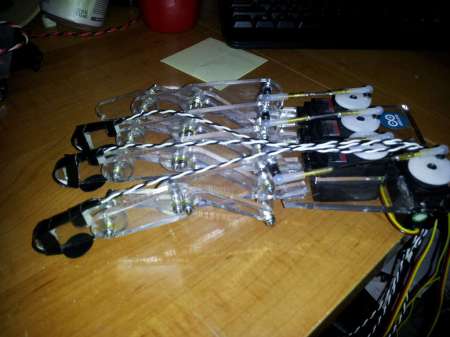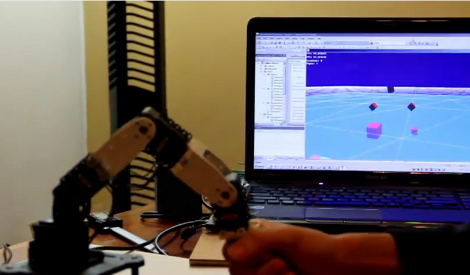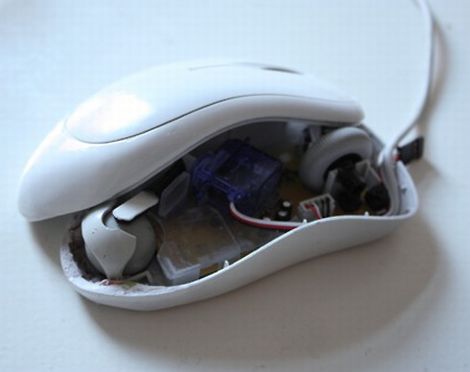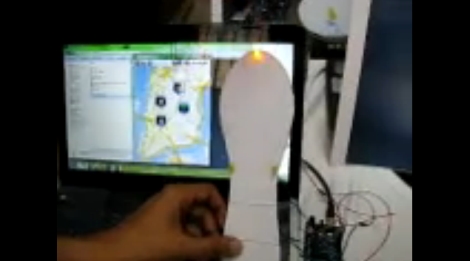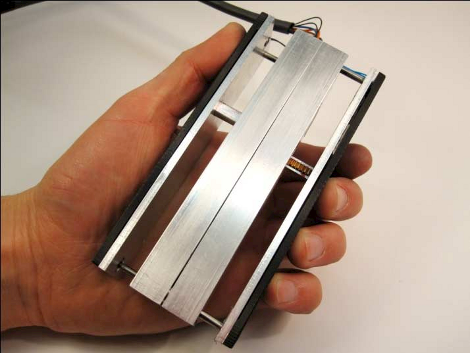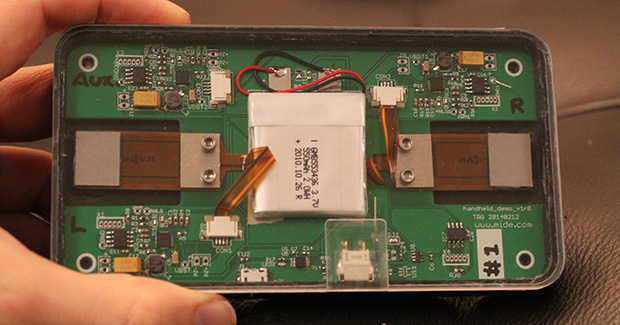
The most common way to put some sort of haptic feedback in an interface hasn’t changed much since the plug-in rumble pack for the Nintendo 64 controller – just put a pager motor in there and set it spinning when the user needs to feel something. This method takes a relatively long time to spin up, and even the very cool Steam controller with voice coiled directional pads can’t ‘stick’, or stay high or low to notify the user of something.
[Tim]’s day job is working with very fancy piezoelectric actuators, and when an opportunity came up to visit the Haptics symposium, he jumped at the chance to turn these actuators into some sort of interface. He ended up creating two devices: a two-piezo cellphone-sized device, and a mouse with a left click button that raises and lowers in response to the color of the mousepad.
The cellphone device contains two piezo actuators with a 10 gram weight epoxied on. A small microcontroller and piezo driver give this pseudo phone the smoothest vibrations functions you can imagine. The much more innovative color-sensing mouse has a single actuator glued to the left button, and a photosensor in the base. When the mouse rolls over a dark square on a piece of paper, the button raises. Rolling over a lighter area, the button lowers. It’s all very, very cool tech and something we’ll probably see from Apple, Microsoft, or Sony in a few years.
Videos of both devices below.

